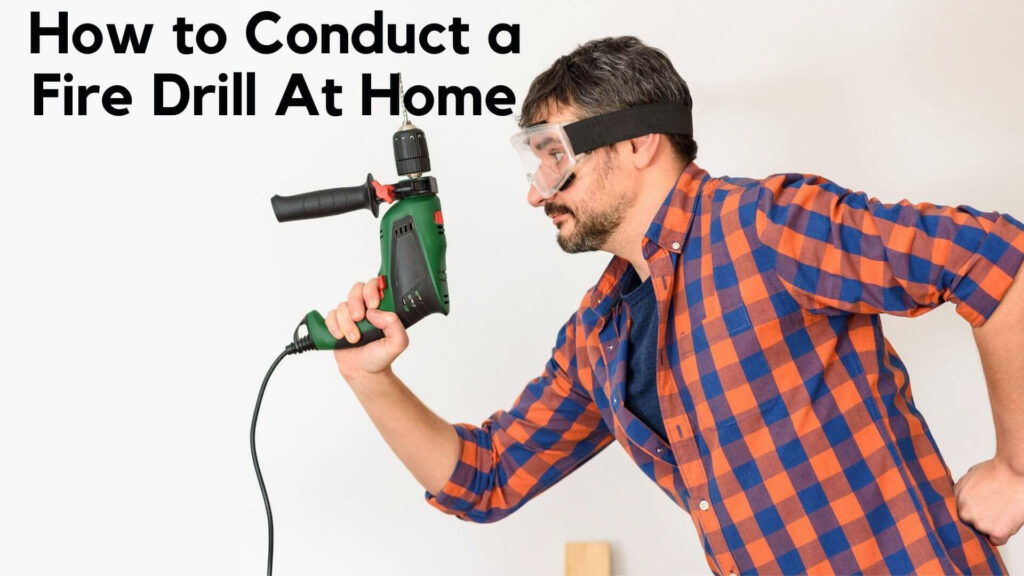Emergencies are unpredictable, and one of the most dangerous is a home fire. Fires spread rapidly, making it crucial to have a plan in place to protect your loved ones. Conducting regular fire drills at home ensures that everyone is prepared to respond quickly and safely. In this comprehensive guide, we will walk you through the steps needed to perform a fire drill at home, including what to check and how to organize your household for emergency preparedness.
Table of Contents
What is a Fire Drill?
A fire drill is a practice exercise designed to simulate the steps one should take in the event of a real fire. The main purpose of a fire drill is to familiarize people with emergency evacuation routes, safety measures, and other necessary actions to take during a fire. Fire drills can be performed in various settings, including schools, offices, and most importantly, homes.
Fire drills at home are essential for ensuring that every member of your household understands what to do in the event of an emergency. It helps to practice exiting the house in an orderly fashion, knowing where to meet outside, and handling any obstacles that may arise during an evacuation. Regular drills can significantly increase the chances of a safe evacuation when time is of the essence.
10 Simple Steps To Conduct A Fire Drill At Home Safe And Smooth
Step 1: Make sure Everyone Knows the Location of the Fire Alarm Box.
The first step in preparing for a fire drill is ensuring everyone in the house knows where the fire alarm box is located. In case of an actual emergency, the fire alarm box serves as the first line of defense by alerting everyone to the danger. Walk through your home and show each family member where the alarm is located, how to trigger it, and how to react when they hear the sound.
Read More: Best Drills for Electricians.
Step 2: Check the Batteries in the Alarm Box and Replace them If Needed.
Fire alarms and smoke detectors rely on batteries to function properly. A critical part of preparing for a fire drill is ensuring that all alarm boxes have working batteries. Test the batteries by pressing the test button on the unit, and if the alarm doesn’t sound, replace the batteries immediately. It’s a good practice to change the batteries in your smoke and carbon monoxide detectors at least once a year, ideally when you change your clocks for daylight saving time.
Step 3: Test the Smoke and Carbon Monoxide Detectors and Replace Any Not Working.
Smoke detectors and carbon monoxide detectors are your home’s first defense against fire and gas-related emergencies. Test these devices to ensure they are functioning correctly. Push the test button to make sure the alarm sounds, and replace any detectors that aren’t working. It’s essential to have working smoke detectors on every floor of your home, especially near sleeping areas.
Step 4: Check For Power Outages and Fix Any that are Found.
Power outages can occur during a fire or another type of emergency. It’s important to ensure your home’s backup systems, such as emergency lighting or generator power, are functional. Check for any issues with power sources and fix them before conducting the drill. Power should be reliable to ensure visibility during an emergency evacuation.
Step 5: Change the Lightbulbs in All of the Lamps in the House.
Proper lighting is crucial during an emergency evacuation, especially if it occurs at night or during a power outage. Check that all lamps in your home have working lightbulbs, as this will help with visibility when leaving the house. Ensure that all pathways, especially near stairs and exits, are well-lit to prevent tripping or falling.
Step 6: Check All of the Locks on Doors and Windows to Make Sure they are Working Properly.
During a fire drill, it’s important that all exits—both doors and windows—are accessible and easy to open. Check all locks to ensure they are working correctly and that no windows or doors are stuck. This step is particularly important if you have sliding doors or older windows that may be difficult to open. Teach family members how to unlock and open doors and windows quickly in case of a fire.
Step 7: Test the Alarm System by Pushing the Button on the Box. If it Does not Sound, Check to See If It is Working Properly.
Test the fire alarm system by pushing the button on the box to ensure it is loud enough to be heard throughout the house. Every family member should be able to recognize the alarm sound and know that it signals an emergency. If the alarm doesn’t sound or isn’t loud enough, troubleshoot the system and make necessary repairs.
Step 8: Have Someone Who Knows How to Operate the System Take Over During a Real Emergency.
In case of a real fire, someone in the household should be designated as the point person responsible for operating the fire alarm system. This individual should know how to trigger the alarm, contact emergency services, and direct others during the evacuation. Having a designated leader ensures the situation remains controlled and organized, even in a chaotic scenario.
Step 9: Shut off the Electricity and Gas Supply
Electricity and gas can both fuel a fire, making it crucial to know how to shut them off in an emergency. During the fire drill, practice turning off the electricity and gas supply in your home. Teach everyone where the shut-off valves are located and how to safely turn them off. This knowledge could prevent a small fire from growing into a larger disaster.
Step 10: Get out of Tour House Safely!
The final and most important step of any fire drill is evacuating your house quickly and safely. Practice using different exit routes from various rooms in the home, and make sure everyone knows how to get out of the house. Establish a safe meeting point outside where all family members should gather after exiting. This ensures that everyone can be accounted for and helps to avoid confusion during a real emergency.
Read More: What Kind of Drill Does an Electrician Need?
Importance of Fire Drills
Fire drills play a vital role in preparing your family for emergencies. Practicing drills can reduce panic, improve response time, and ensure that everyone in the household knows how to act in a real fire. Here are some key benefits of conducting regular fire drills:
- Prevent Panic: Fire drills allow family members to practice how to stay calm and respond to a fire without panicking. Repeated practice helps people remain composed and make quick, rational decisions in an emergency.
- Practice Escape Routes: Fire drills familiarize household members with the various exit routes in the home. If one exit is blocked by fire, having a practiced secondary route can save lives.
- Evaluate Weaknesses: During a fire drill, you can identify any weaknesses in your fire safety plan. Whether it’s a malfunctioning lock, a smoke detector that doesn’t work, or a blocked escape route, these issues can be fixed before a real emergency occurs.
- Involve the Entire Household: Fire drills allow everyone, including children and the elderly, to practice the emergency plan. This involvement ensures that even the most vulnerable members of your family know what to do in case of a fire.
- Test Emergency Equipment: Regular drills give you an opportunity to check fire alarms, smoke detectors, and emergency lighting. Ensuring that all equipment works properly is key to a safe evacuation.
FAQs
How often should I conduct fire drills at home?
Fire drills should be conducted at least twice a year. Regular drills keep the procedures fresh in everyone’s mind and help identify potential issues with your fire safety plan.
Can I involve young children in fire drills?
Yes, it’s important to involve young children in fire drills. Teach them how to recognize the sound of the fire alarm and how to safely evacuate the home. Make the drills fun and educational to help them remember the steps without fear.
What if a family member has mobility challenges?
If a family member has mobility challenges, you should incorporate their needs into the fire drill. Assign someone to assist them during evacuation, and make sure you have equipment such as fire escape ladders or specialized evacuation tools if needed.
Should I call emergency services during a drill?
No, there’s no need to call emergency services during a drill. However, during an actual fire, you should call 911 as soon as you are safely outside the house.
Can I use a fire ladder for upper floors?
Yes, a fire ladder is an excellent tool for evacuating from upper floors. Make sure to store the ladder in an easily accessible location and practice using it during fire drills.
What should I do if a room is engulfed in smoke?
If a room is filled with smoke, stay low to the ground to avoid inhaling the smoke. Cover your nose and mouth with a cloth if possible and crawl to the nearest exit. Never open doors that are hot to the touch, as fire may be on the other side.
Last Word
Fire drills at home are an essential part of emergency preparedness. By conducting regular drills, you ensure that everyone in your household is familiar with the escape plan and knows how to react quickly and calmly in case of a fire. Taking the time to practice these steps could make all the difference during a real emergency. Remember: being prepared can save lives.

Hey, I am MD Hrithik Hossain, I’m a huge fan of DIY crafts. My workshop is where I spend most of my spare time, and I’m always working on some project. To that end, I’d like to share some of my knowledge and experience with you in power tools, woodworking, and other specialized materials fabrication.
I will guide you with genuine knowledge that can assist you with deciding whether a drill is appropriate according to your requirements or not. If you want to find the best drill and know which type of drill is most suited for your needs, then I can guide you with my expertise. My passion lies in helping others find the correct products they need at an affordable price.


